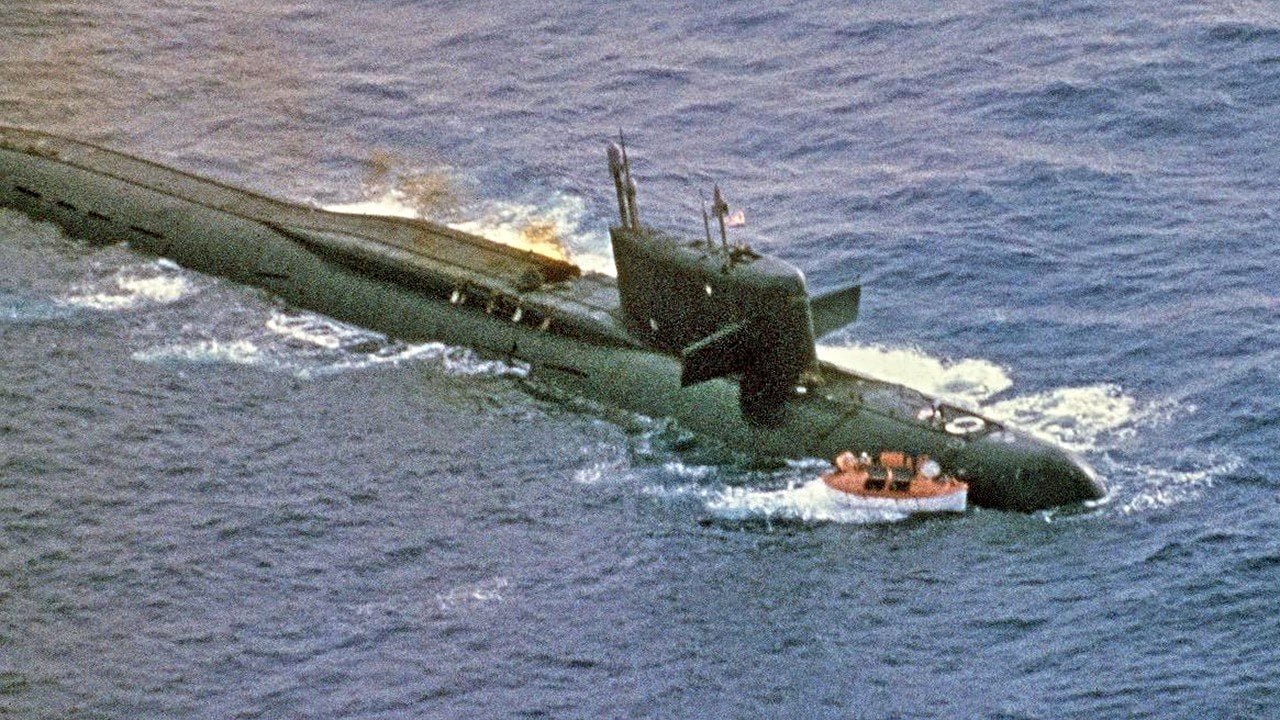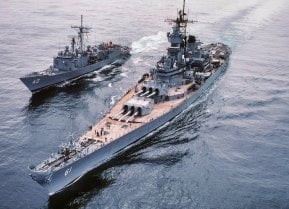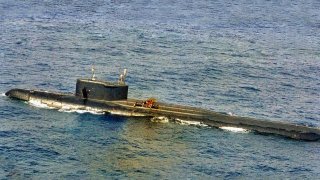‘Sir, We Just Dumped Our Nuclear Weapons’: How Russian Missile Submarine K-219 Was Lost
The disastrous sinking of the submarine K-219 on Oct. 6, 1986, stands as a testimony to the poor training, design, and maintenance of Soviet submarines.
The disastrous sinking of the submarine K-219 on Oct. 6, 1986, stands as a testimony to the poor training, design, and maintenance of Soviet submarines.
“Construction deficiencies, plus imperfect crew rescue equipment, plus the startling slowness and inertia of the naval agencies in introducing new ideas--such, in my opinion, is the alarming formula of the recent emergencies and tragedies,” Capt. Ilya B. Kolton, a 30-year veteran of the Soviet submarine force, wrote in a 1989 letter to Komsomolskaya Pravda, a publication of the Soviet Union’s Communist youth organization,
The K-219, a Project 667A Navaga class, better known by its NATO reporting name Yankee-I class, was not an exception after a seal failure in one of its missile tubes led to an explosion.
Did a U.S. Submarine Collide With K-219?
The Soviets claimed that the K-219 collided with the Los Angeles-class attack submarine USS Augusta SSN-710 on Oct. 3, 1986. The U.S. Navy denied the allegation.
Soviet ballistic missile submarines used liquid-fueled SLBMs in contrast with the U.S. Navy, which uses solid-fueled missiles. The submarine was commissioned in December 1971.
At the time of the sinking, K-219 was on patrol near Bermuda.
Gushing Seawater Triggered Missile Explosion
Seawater mixed with oxidizer in one of the liquid-fueled R-27U submarine-launched ballistic missiles (SLBM) after the seal in Missile Tube Number 16 failed. Seawater mixed with the Dinitrogen tetroxide used by the missile, causing it to create nitric acid.
The nitric acid ate through a critical component, causing a significant explosion as the oxidizer mixed with fuel.
That explosion ejected the R-27U missile and its warhead from the submarine while it was still submerged. Water poured into the rest of the submarine as the explosion ruptured the missile tube.
The nuclear weapons carried onboard were ejected safely.
The submarine sank over 800 feet deeper into the abyss within minutes. Two crewmen were killed. Smoke filled the boat. It lost its loudspeaker and transmitter. The captain of the vessel, Captain Second Rank Igor Anatolievich Britanov, ordered the blowing of all tanks to emergency surface the ship. The submarine came to the surface and smoke could be seen pouring out of the ruptured silo.
Britanov had been the boat’s captain since 1984, Soviet documents show. At the time of the accident, the submarine was operating with a crew that was unfamiliar with working with each other and with the K-219. The submarine’s maintenance also had been lagging.
Soviet Merchant Vessel Rescues K-219’s Crew
The submarine was able to contact the Soviet fleet command which dispatched the nearest Soviet merchant vessel, the Anatoly Vasiliev, to rescue the crew. Meanwhile, corrosive gases away and the insides of the submarine causing pipes to burst. Radiation in the missile compartment kept parts of the crew trapped in the bow and the stern of the submarine from working together to control the damage.
The reactor cooling system began to be compromised by the corrosive gases. This threatened to spread radioactive gases over Bermuda. The Soviet crew succeeded int keeping the reactor from overheating. The crewman who prevented the meltdown died after he became trapped.
A Soviet merchant vessel arrived to evacuate the crew and attempted to tow the K-129, but the tow line broke and the submarine sank to the bottom of the ocean. Britanov was the last crew member to evacuate the submarine as it sank on Oct. 8, 1986.
Politburo Concerned About U.S. Espionage Opportunity
Mikhail Gorbachev’s accession to power in 1985 brought about a sea change in terms of Soviet-American relations following the most heated period of the Cold War that followed the election of Ronald Reagan. The reaction from Moscow to the accident stood in contrast with the April 1986 Chornobyl accident in which the Soviet authorities hid the disaster from view. Minutes from the Soviet Politburo meeting from Oct. 6, 1986, show that Gorbachev had informed Reagan of the accident and that Reagan had offered assistance.

Gorbachev and other Politburo members recalled that the CIA had attempted to recover the K-129, a Project 629A class submarine, better known by its NATO reporting name as the Golf-class, in 1974 seeking its secrets. That conventionally powered ballistic missile submarine sank in 1968 while conducting missile drills. The Politburo worried the U.S. would try the same thing with the K-219.
The Soviets launched the first Project 667A Navaga class submarine in 1964. In total, 34 were built, and each one carried 16 ballistic missiles. They were 425 feet in length and was similar to the George Washington-class Polaris ballistic missile submarines used by the U.S. Navy at the time.
About the Author
John Rossomando is a defense and counterterrorism analyst and served as Senior Analyst for Counterterrorism at The Investigative Project on Terrorism for eight years. His work has been featured in numerous publications such as The American Thinker, The National Interest, National Review Online, Daily Wire, Red Alert Politics, CNSNews.com, The Daily Caller, Human Events, Newsmax, The American Spectator, TownHall.com, and Crisis Magazine. He also served as senior managing editor of The Bulletin, a 100,000-circulation daily newspaper in Philadelphia, and received the Pennsylvania Associated Press Managing Editors first-place award for his reporting.
All images are Creative Commons.


